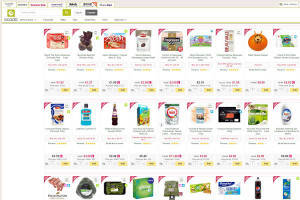The Online Extremist
30 June 2015
Different to other food retail majors, Ocado has focused on the online business. In 2014, the company showed a profit for the first time and is now also offering its hardware and software to international partners. Pro Carton has followed the developments in e-commerce from the beginning and taken a closer look at the strategy of the world's most innovative retailer in the foods business.
Online food retailing attained its first level of technical and commercial maturity in 2014. For the first time, Ocado showed a profit of nearly ten million euros and a good positive outlook, expecting the UK online grocery market to double in the next five years to 8.3 % of total UK grocery sales.




